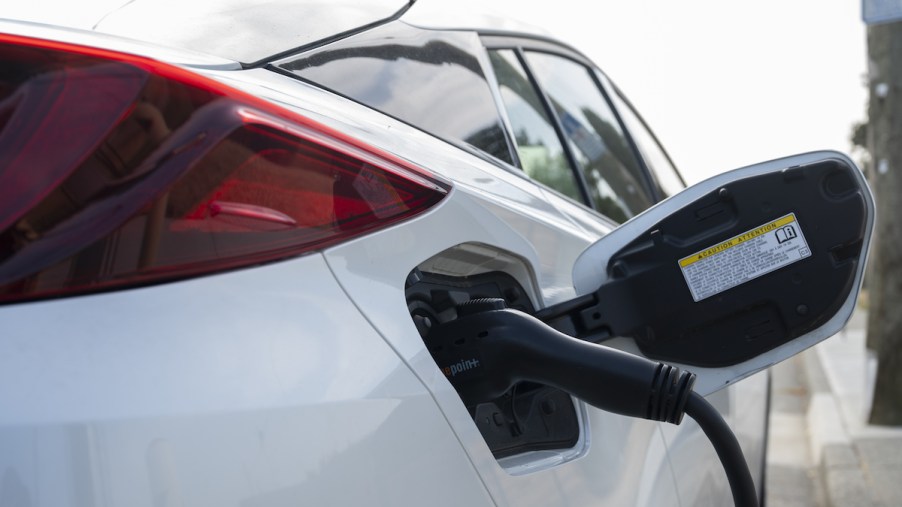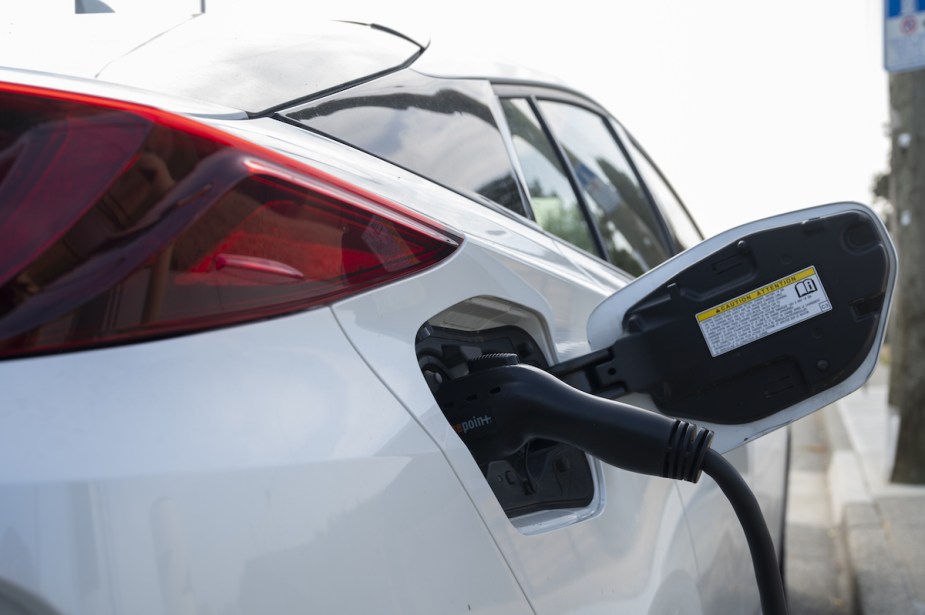
What Is an Idle Fee and How Can It Cost You in a Major Way When You Charge an EV?
EV charging can be confusing. There are so many different types of charging stations. And how do you know what to do when you get there and when you’re done? However, when you charge your EV, you’ll want to avoid an idle fee that could cost you in a major way.
Types of EV Charging Stations

PG&E says there are three types of charging stations: Level 1, Level 2, and Level 3. Level 1 charging stations are mainly sold to EV owners. You can plug these into your standard household 110-volt grounded wall outlet and charge away.
Level 2 charging stations require a 240-volt connection. They are up to four times faster than Level 1 and suitable for organizations or owners of specific models with bigger batteries. PG&E suggests Tesla Model 3 owners invest in these upgraded charging stations. Just keep in mind that you will need a licensed electrician for installation.
Level 3 charging stations are found at commercial charging stations. These chargers juice up an EV quicker than the others. Level 3 can charge an EV entirely in roughly 30 minutes.
There are currently more than 30 charging station networks in the United States. According to the US Department of Energy Alternative Fuels Data Center (AFDC), they provide more than 58,000 EV charging stations nationwide. Each network and station can choose its idle fee and should publish signage informing you of time limits and fees. So, what are idle fees?
What is the Purpose of Idle Fees?
Idle fees are extra charges consumers may pay when they leave their EVs at a charging station for too long. For instance, Tesla’s Supercharger Network idle fee is $0.50 per minute if a Supercharger station has other chargers available and $1.00 per minute if the charging station is at capacity, per Tesla. However, these fees are waived if the driver moves the EV within the first five minutes of idle time.
These fees can add up quickly for EV owners who dally at charging stations. Imagine traveling cross country and spending an extra 15 minutes at every charging station to stretch your legs and walk the dog. That’s anywhere from $7.50 to $15.00 per stop. Depending on your EV range, that could cost you hundreds of dollars daily on a cross-country trip. But it all depends on the charging station and its predetermined fee schedule.
Idle fees encourage EV owners to move their vehicles promptly after they’re charged. And let’s face it, they also generate income for charging station owners.
Without idle fees, lax owners could cost station owners incredible amounts of money. Ultimately, charging stations only earn when connected to a vehicle.
How to Avoid Idle Fees and Save Money
Charging station etiquette is similar to traditional fuel pump etiquette. You get your charge and get out of the way. Kelley Blue Book (KBB) also notes that EV drivers should abide by these simple standards.
It’s important to know the vehicle’s details, like the location of the charge port door and DC fast-charging capability. Paying attention to signage that states time limits and obeying them can eliminate a lot of headaches. Also, resist the urge to park for a long time while you eat or sleep and never unplug another vehicle, even if the driver has left it beyond the allowed time.
If you need to spend a full two hours at a charging station, set an alarm on your phone and check on your vehicle every 15 or 30 minutes. Otherwise, you may end up paying significant idle fees.
Also, consider unplugging before you reach a full charge. The nearer your battery is to a complete charge, the longer it takes to achieve a charge. Put another way, if it takes five minutes to go from 20% to 25% charge, it might take 40 minutes to go from 90% to 95%. This phenomenon is true of all EVs, even Level 3 DC fast-charging models.
Ultimately, EV technology is still new. You can expect more charging stations to crop up in the next few years. But it’s essential to be a responsible owner at charging stations. Your actions and awareness could save you hundreds of dollars on long trips.


